Nanjing responded to Xuanzang Temple's dedication to the chamber of the war: hurting the feelings of the nation, to find out
Author:Jinan Times Time:2022.07.23
Regarding the relevant situation of the dedication space of Xuanzang Temple, according to the official Weibo of the Press of the Nanjing Municipal Party Committee, the National Religious Affairs Bureau of Xuanwu District will investigate the behavior of harming the emotions of the nation.
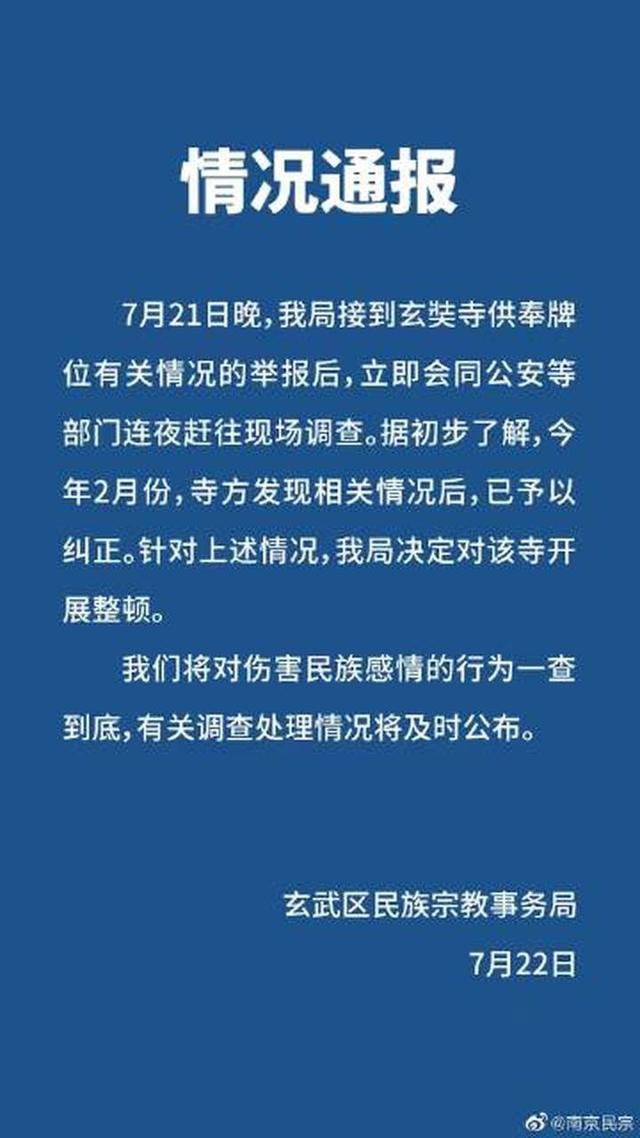
The official Weibo of the Nanjing Massacre Memorial Hall of the Nanjing Massacre of the Japanese Army forwarded the above notice that we must not forget the serious crimes committed by the invaders at any time! National feelings cannot be damaged, look forward to finding it in the end!
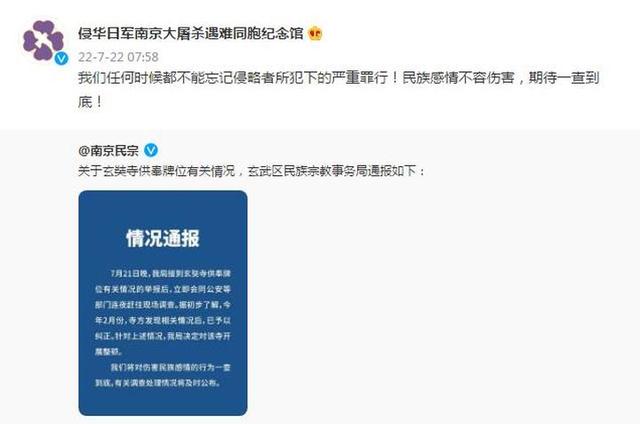
Earlier, some netizens broke the news that in the Tibetan Temple of Xuanzang Temple in Jiuhuashan Park, Nanjing, a row of long -lasting tablets worshiped the Japanese war criminals, and the news immediately caused netizens to anger.
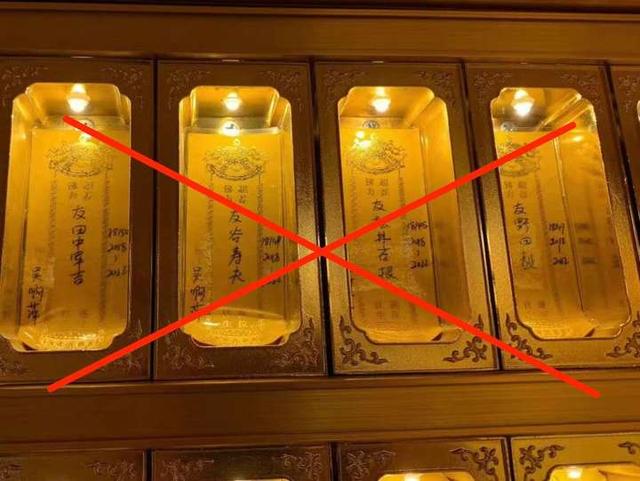
Network transmission pictures
Historical extension
Among the four war criminals, one of the main leaders of the Nanjing Massacre, one of the main leaders of the Matsumi Matsui Matsui Matsui, the first evil of the Nanjing Massacre, Grade B war criminal Gu Shoufu, and the Class C war criminals who created a "hundred people cut" murder competition in Nanjing Noda and the troops were used to kill more than 300 Chinese military and civilians.
Matsui Ishigen (July 27, 1878 -December 23, 1948), a Japanese army Grade A, a Japanese army general. During the Japanese invasion of China, he served as commander of the Chinese Central Army. From 1937 to 1938, the Japanese army occupied Nanjing, and condemned the unmanned Nanjing Massacre.
According to Xinhuanet, the then Japanese invading army of Shanghai sent officers Matsui Matsui Matsui Ishigen was stubbornly resisted by the Chinese military and civilians when capturing Shanghai. At 7 o'clock, a order was issued to the army.
At this time, half of Nanjing residents and diasporas have evacuated, but there are still hundreds of thousands of residents and a few foreigners. In the international security area defined by the foreigner, 25 refugee revenue has been set up. On December 9, Matsui Shigen ordered the troops to be the so -called ultimatum to the airdrop in Nanjing City, and claimed that the war is about to begin. If the Chinese army will want to fight the war, the horror of all wars will be fulfilled in Nanjing. At 5 pm on December 12, the senior general of the Kuomintang Nanjing Defense Forces escaped the city, but hundreds of thousands of non -incoming people fell below the slaughter of the Japanese aggressive army.
After the invasion of Nanjing, Matsui ordered the troops to "scan the city in the district". In the following six weeks, Matsui Ishigen led his invading troops to create a shocking and terrible case of slaughtering in Nanjing. There is no need to say about the details of this tragedy, we are too familiar, and the tirit -of -white bones of the Nanjing Massacre Memorial Museum. In addition, the evidence that made Matsui Shigen's inability to refute was a report from a foreign journalist: American journalist Dading described in a report back to China, "As the Japanese army occupied the next level, the defensive forces were massacred. Mixed in a sandbag and accumulated, forming a 6 -foot -high hill. "
The 25 refugees in international security areas have not escaped the massacre. Most of the Chinese people were dragged out of the collective massacre of the refugee camp by the Japanese invading army, and many women were raped many times. At that time, the founding member of the International Security Council, director of the Surgery of Jinling University Hospital, and American professor Betis testified at the Far East International Court: "The Nanjing International Security Zone Commission buried the death of the army's dead body 30,000 ... The rape incident, 30,000 refugees in Jinling University's school, hundreds of rape incidents. "
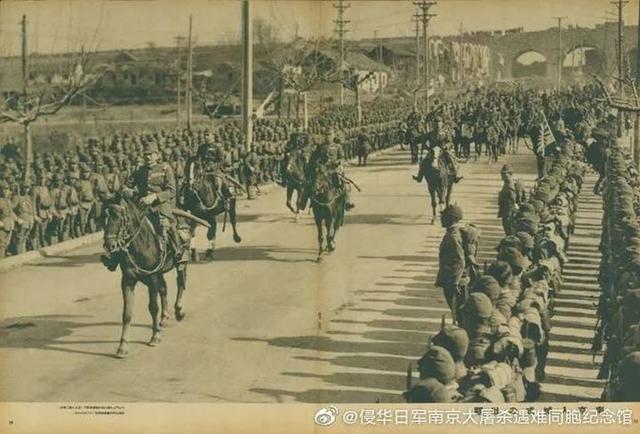
On December 17, 1937, the Japanese army occupied Nanjing's entry into the city. The picture shows Matsui Ishigen and other horses entering the city from Nakayama Gate to review the troops.
On March 10, 1947, the "trial (Japan) war criminals Nanjing Military Tribunal" organized by the Ministry of National Defense of the Chinese National Government verified: During the Nanjing Massacre, there were 28 cases of large -scale collective slaughter, and more than 190,000 people were slaughtered; sporadic massacres were there. The 858 case, killing about 150,000 people. The Japanese massacred more than 30,000 prison prisoners of war and refugees.
On November 12, 1948, Matsui Ishigen was twisted by the Far East International Military Court as a Class A war criminal, and at 00:00 on December 23 in the Nest Duck Prison Law of Tokyo.
Noda Tya (1912 -January 28, 1948), Japanese army C criminal C.
According to the surging news report, in 1937, before and after the capture of Nanjing, he played an appalling killing game with Xiang Jingming. Noda Yi used the military knife to kill 105 Chinese military and civilians. At that time, the Japanese media gave this "competition" continuously reported to promote the "brave martial arts" of Japanese soldiers. "Tokyo Daily News" also sent a photo of the two holding a saber in the report on December 31. On January 1, 1938, the English newspaper "Miller Review News" in the Shanghai Concession reprinted the news of the killing competition of Kami Ini Minomi and Noda Yita in "Tokyo Daily News". Then other foreign media also made reprint reports Essence On January 25, 1938, the "Report" (Hankou Edition) also took the title of "The Enemies of the Murder of the Zijin Mountains", and reprinted the "Miller Review News" report on "Hundred People". On the same day, Wuhan's "Xinhua Daily" also published a report entitled "Nanjing Zijin Mountain Murder Competition, Kou Jun's atrocities of the Riandan".
In 1947, Noda Yita and Xiangjing Minming were arrested by the Chinese Allied forces and were detained to the Nanjing Military Court for trial. On January 28, 1948, Noda and Xiangjing Minming were executed in Yuhuatai, Nanjing.

Beginning in late November 1937, Noda and others created the appalling "hundred people" competitions in Nanjing. The picture shows the Japanese media report at the time.
Gu Shoufu (December 23, 1882 ~ April 26, 1947), the Japanese army B war criminal. In 1937, he was the head of the sixth division of the Japanese invaders and belonged to the Tenth Army. The command station participated in the Nanjing Massacre. It was one of the culprits of making the Nanjing Massacre. According to the People's Daily Online, on December 13, 1937, Gu Shoufu led his department to enter Nanjing. At that time, the fleeing Nanjing citizens crowded on the main streets. Gu Shoufu ordered the officers and soldiers to throw grenades against the innocent people and fired with machine guns. Tens of thousands of citizens of Nanjing were killed. Gu Shoutian won the award.
At the end of 1937 and in Nanjing in the early 1938, he was unlikely. The sixth division of the Japanese invading Japanese army led by Gu Shoufu was the earliest invaders to capture Nanjing City. The Gu Shoufu division stationed in the China Gate, including Yuhuatai, was one of the most miserable regions of the Japanese army at that time.
On February 2, 1946, Gu Shoufu was arrested by the Allied Headquarters for suspected war criminals and was closed to Tokyo Chaoyu Prison. After Gu Shoufu was armed to Nanjing in August 1946, the military court reconnaissance room of the First Appeasement District Command of the Nanjing National Government immediately asked him. Gu Shoufu avoids the situation of the Nanjing Massacre. He said arrogantly, "What is the" Nanjing Massacre "? I don't know! Well, it doesn't matter, the dead are also dead, and the Japanese have died a lot!"
On February 6, 1947, the Nanjing trial war criminals and military courts in Nanjing, Nanjing, Nanjing Road Inspirations Society Auditing Gu Shoufu. At noon on April 26, Gu Shoufu was detained to Yuhuatai, Nanjing to perform a gun.
In 1947, Gu Shoufu was frightened to the ground before Yuhuatai's sentence, and he was ugly.
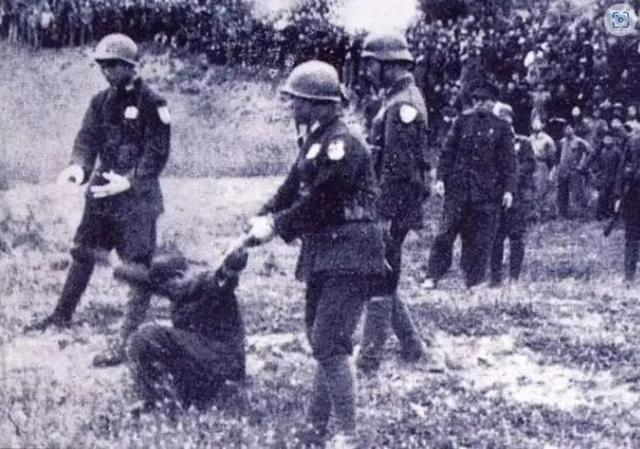
According to the China Archives, Tianzhong Junji (March 19, 1905 -January 28, 1948), in 1937, invaded the Japanese army invading North China, and then the captain of the 45th Union of the 6th Division of the Japanese Army. During the Nanjing Massacre, he participated with the "help Guang" military knife, and beheaded more than 300 Chinese military and civilians. The book "The Emperor" edited by the Japanese officer Yamakama Nakamoto published a photo of his military knife, and the photo was marked with the words "The captain of the three hundred people (referring to the Tanaka Army) Ai Sword to help Guang". On December 18, 1947, the military court of the Ministry of Defense tried the two war criminals of Tanaka Junji and "Hundred People Cut". On January 28, 1948, Tanaka Junji was in charge of Nanjing Yuhua Terrace.
On January 28, 1948, Xiang Jing Min Ming (first right), Noda (first left), and Tanaka Jun (second from left) were executed in Yuhuatai.
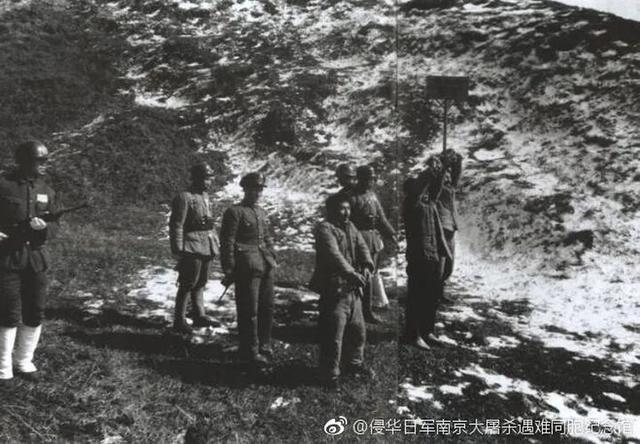
Source:@来 来 来,@来 来 Japanese Nanjing Massacre Memorial Museum, Observer Network
Edit: Han Luying
- END -
"Health Hall" broadcast "Combination Boxing for Winter Diseases and Summer Summer" at 17:25 today

expertSun Tao: Chief Physician of the Department of Oncology at the Oriental Hospi...
Xinhua Daily was again selected as "China's 500 Most Valuable Brand"

On July 26, the 19th World Brand Conference hosted by the World Brand Laboratory w...